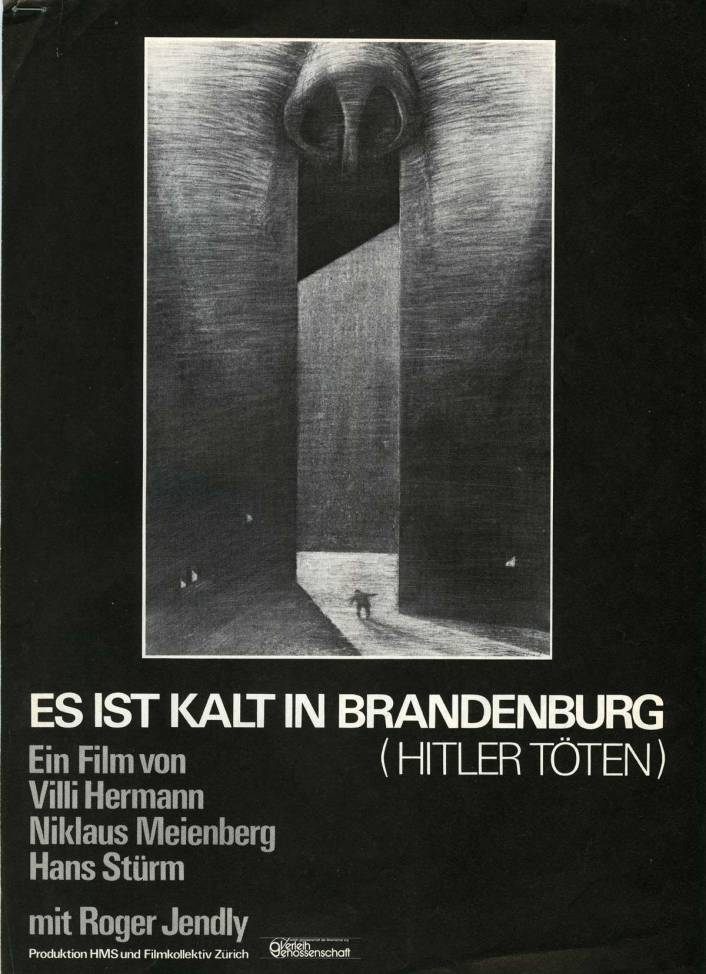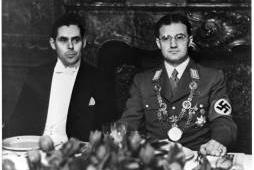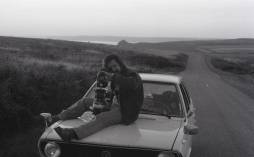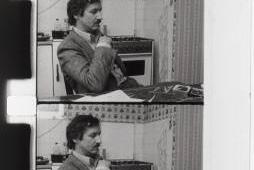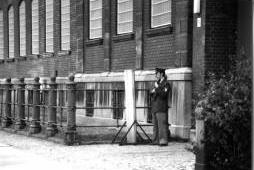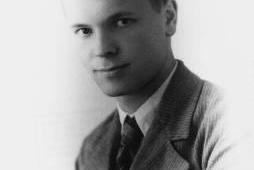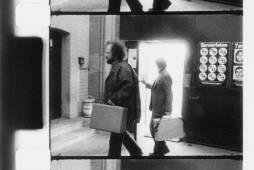Es ist kalt in Brandenburg (Hitler töten)
Titolo originale: Es ist kalt in Brandenburg (Hitler töten)
Titolo: Fa freddo in Brandeburgo (Uccidere Hitler), Il fait froid dans le Brandebourg (Tuer Hitler), It's Cold in Brandenburg (Kill Hitler)
Genere: Documentario
Versione: French, English, German
Sottotitoli: francese, inglese, tedesco
Anno, durata: 1980, 140' e 104' min
Regia: Villi Hermann, Niklaus Meienberg, Hans Stürm
Sceneggiatura: Villi Hermann, Niklaus Meienberg, Hans Stürm
Formato: 16mm, Beta SP, DCP
Colore: b&w
Formato immagine: 4:3
Produzione: HMS, Filmkollektiv Zürich
In coproduzione con: ZDF / DRS
Distribuzione: Imagofilm Lugano
Festival: Semaine de la Critique Cannes 1981, Film Forum Berlin 1981, 31. Solothurner Filmtage 1996
ISAN: 0000-0003-AD0F-0000-M-0000-0000-8
Sinossi breve
ITA: Fa freddo in Brandeburgo narra storia e fatti reali legati ad un seminarista cattolico, lo svizzero Maurice Bavaud che, nel 1938 a soli ventidue anni, lascia la sua città natale, per recarsi nella Germania nazista con l’intento preciso di uccidere Hitler, da lui considerato una sorta d’incarnazione dell’Anticristo.
Il viaggio di Bavaud tocca Berlino, Monaco, Berchtesgaden e termina, senza che l’attentato venga commesso, nelle vicinanze di Augsburg dove Bavaud, in possesso di una pistola, viene arrestato. Comparso davanti al “Tribunale del popolo” di Berlino viene condannato a morte e ghigliottinato il 14 maggio 1941, dopo 30 mesi di detenzione a Berlin‑Plötzensee. Il drammaturgo Rolf Hochhuth lo considerata un “Tell 38”.
FRA: Maurice Bavaud est né à Neuchâtel le 15 novembre 1916. Condamné à mort le 18 décembre 1939 par le « Volksgerichtshof » de Berlin, il a été décapité le 14 mai 1941 à la prison de Berlin-Plötzensee. Le personnage de Maurice Bavaud n’a jamais fait partie de la conscience collective. Seul Rolf Hochhuth, en 1976 dans un discours à Bâle, intitulé « Tell 38 » a fait connaître le cas de Maurice Bavaud au grand public. Ce sont ces analyses qui ont poussé Villi Hermann, Nicolas Meienberg et Hans Stürm à rechercher les traces de Maurice Bavaud.
DEU: Maurice Bavaud, ein junger Schweizer aus Neuchâtel, plante 1938 ein Attentat auf Adolf Hitler. Mehrere Versuche, dem Führer nahe genug zu kommen, um ihn mit einer Pistole erschiessen zu können, scheiterten jedoch. Schliesslich wurde Bavaud bei einer Routinekontrolle verhaftet und - nachdem sich die Schweizer Behörden nicht ernsthaft für ihn eingesetzt hatten - 1941 in Berlin hingerichtet.
ENG: Maurice Bavaud, a 22 year old Swiss from Neuchâtel planned an attempt on Hitler’s life in Munich 1938. Armed with a small pistol, he tried for several weeks to get close enough to Hitler to complete his mission, but never succeeded. Some time later, he was picked up by the Gestapo. What were his reasons? This film tries to trace the footsteps of this catholic student. In an article on Maurice Bavaud by the dramatist Rolf Hochhuth, the author describes him as “Tell 38”.
Hans Frölicher, at the time Swiss ambassador in Berlin, condemned his “abominable intentions”. And the People’s Court in Berlin considered it to be “entirely natural to encounter political catholic gangster activity of his kind with the death sentence”.
Maurice Bavaud was executed by the guillotine in 1941 in Berlin-Plötzensee after 30 months imprisonment.
Sinossi
FRA: Maurice Bavaud est né à Neuchâtel le 15 novembre 1916. Son père était facteur, sa mère tenait un petit commerce de légumes. Condamné à mort le 18 décembre 1939 par le « Volksgerichtshof » de Berlin, il a été décapité le 14 mai 1941 à la prison de Berlin-Plötzensee. D’éducation strictement catholique, Maurice Bavaud, qui avait fait un apprentissage de dessinateur technique à Neuchâtel répondait, en rentrant au séminaire de Saint Ilan (Bretagne) à une vocation tardive de missionnaire. C’est là qu’il a pris la décision de se rendre en Allemagne et de tuer Hitler. Armé d’un pistolet, il essaya à Berlin, à Berchtesgaden et à Munich d’approcher le Führer – en vain. Finalement, sans billet et sans argent, il est arrêté par la Gestapo dans le rapide Munich-Paris. Mais quelles étaient ses motivations? Qui était en réalité Maurice Bavaud?
Le personnage de Maurice Bavaud n’a jamais fait partie de la conscience collective. Seul Rolf Hochhuth, en 1976 dans un discours à Bâle, intitulé « Tell 38 » a fait connaître le cas de Maurice Bavaud au grand public. Ce sont ces analyses qui ont poussé Villi Hermann, Nicolas Meienberg et Hans Stürm à rechercher les traces de Maurice Bavaud.
Au début du travail cinématographique, l’histoire n’était qu’une liasse de documents qui retraçaient un cas « criminel » et historique. Mais l’analyse cinématographique de ce cas devait se révéler très fertile. Plus les auteurs s’investissaient, et plus ils approfondissaient leur relation: à la mentalité et aux individus de l’époque – au climat politique et aux individus d’aujourd’hui, la démarche biographique est devenue, durant cette recherche des traces, un champ historique étendu, aussi bien temporellement que géographiquement, champ dans lequel le fascisme plongeait ses racines.
DEU: Der 22jährige Schweizer Maurice Bavaud aus Neuchâtel plante 1938 in München ein Attentat auf Adolf Hitler. Welches waren seine Gründe? Wir versuchen den Spuren dieses katholischen Seminaristen nachzugehen. Rolf Hochhuth schrieb in einem Artikel über Maurice Bavaud von einem „Tell 38“. Der damalige Schweizer Botschafter in Berlin, Hans Frölicher, verurteilte seine „verabschuungswürdigen Absichten“. Und dem Volksgerichtshof in Berlin schien es eine „Selbstverständlichkeit, einem solchen Gangstertum des politischen Katholizismus nur mit der Todesstrafe begegnen zu können“. Maurice Bavaud wurde denn auch 1941 nach 30 Monaten Haft in Berlin-Plötzensee durch die Guillotine hingerichtet. Auf Wunsch des Reichsministers der Justiz durften das deutsche sowie das Schweizerische Volk nichts davon wissen.
Ebenso wichtig wie das Aufspüren des historischen Materials und des politischen Umfeldes für die Geschichte von Maurice Bavaud waren für uns Filmemacher die direkten Bezüge, die von dieser Geschichte in unsere Gegenwart führen.
ENG: Maurice Bavaud, a 22 year old Swiss citizen from Neuchâtel (French speaking part of Switzerland) planned an attempt on Hitler’s life in Munich in 1938. Armed with a small pistol, he tried for several weeks to get close enough to Hitler to complete his mission, but never succeeded. Some time later, he was picked up by the Gestapo. What were his reasons? This film tries to trace the footsteps of this catholic student. In an article on Maurice Bavaud by the dramatist Rolf Hochhuth, the author describes him as “Tell 38”.
Hans Frölicher, at the time Swiss ambassador in Berlin, condemned his “abominable intentions”. And the People’s Court (Volksgerichtshof) in Berlin considered it to be “entirely natural to encounter political catholic gangster activity of his kind with the death sentence”.
Maurice Bavaud was executed by the guillotine in 1941 in Berlin-Plötzensee after 30 months imprisonment. In accordance with the wishes of the Nazi National Minister of Justice, neither the German nor the Swiss public were informed of the execution. For the filmmakers, Villi Hermann-Niklaus Meienberg-Hans Stürm, the direct reverence to the present day inherent in this story were just as important as the tracing of the historical material and the political situation relating to the story of Maurice Bavaud.
Collaboratori
Regia: Villi Hermann, Niklaus Meienberg, Hans Stürm
Sceneggiatura: Villi Hermann, Niklaus Meienberg, Hans Stürm
Con: Roger Jendly
Camera: Hans Stürm
Montaggio: Villi Hermann, Niklaus Meienberg, Hans Stürm
Suono: Villi Hermann
Musica: Frank Wolff
Produzione: HMS, Filmkollektiv Zürich
In coproduzione con: ZDF / DRS
Produttori: Villi Hermann, Niklaus Meienberg, Hans Stürm
Link: https://www.filmkollektiv.ch/pagina.php?0,20,11,0,26

